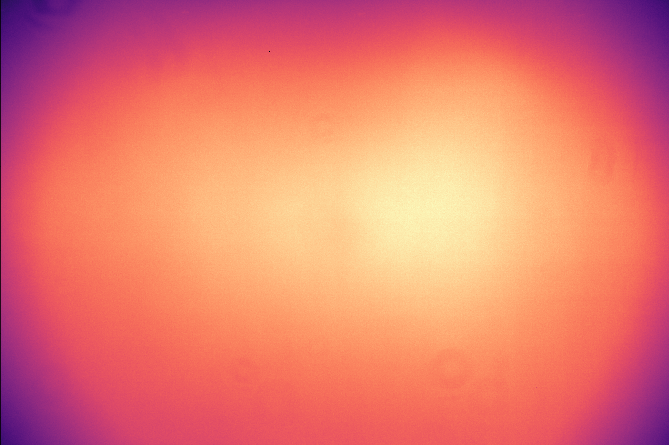Dark Frames
A dark frame is an image taken with lights turned off.
Darks are used to account for a camera’s inherent amount of read out noise and thermal noise. As a result of thermal noise, the number of photons detected by the CCD is over-estimated.
A dark frame should have the same exposure time as the target image you take. It is best to take multiple dark frames, which can then be averaged out into a single frame.
Dark frames don’t look particularly interesting, but they can reveal the occasional hot pixel (see image below).

Flat Frames
The field of view from the CCD is more sensitive to pixels in the center of the field than those in the outskirts, as shown in the flat frame below. Flats are taken to correct for the lack of uniformity in the field of view.
Flat frames are taken around sunset and in the same filter as the target image.
Like darks, it is best to take multiple flat images (~20). However, you can’t take a simple average or median of the frames. Because the flats are taken over the course of an evening, each successive flat frame will appear darker than the next. To create a single flat, these frames should be merged together with the consideration for changing pixel intensity.

Once you have subtracted your dark frame and divided your flat frame from your target image…voila! Your corrected image should appear much better than it would have without noise considerations.
